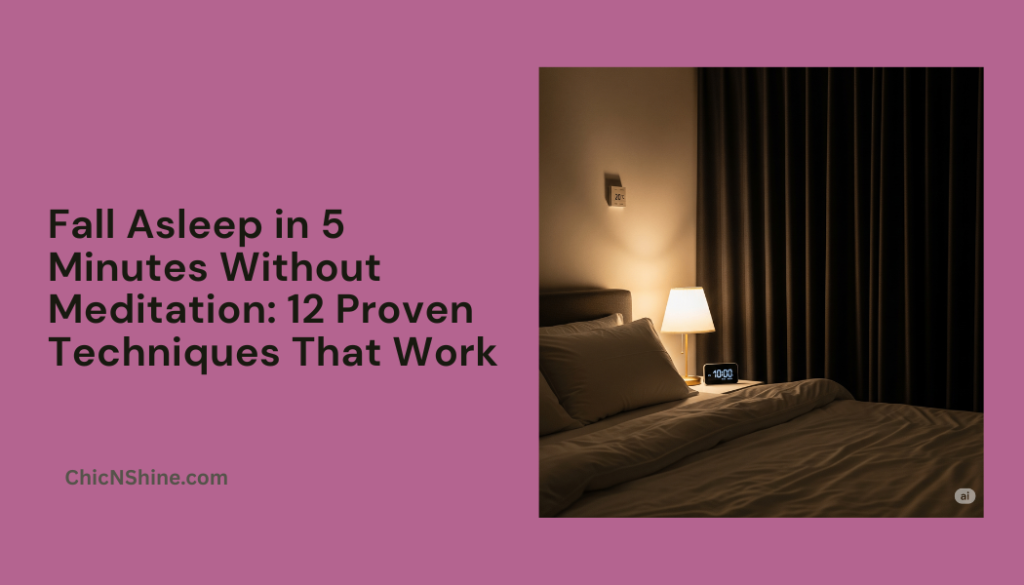Last year, I was one of those people who would lie awake for hours, my mind racing despite feeling physically exhausted. Everyone kept suggesting meditation apps, but honestly, I found them more stimulating than calming. That’s when I discovered how to fall asleep in 5 minutes without meditation using simple, science-backed techniques that transformed my nights completely.
After months of experimenting with different approaches, I’ve developed a reliable system that works consistently. The best part? These methods require no apps, no guided audio, and absolutely no meditation experience.
My Journey to 5-Minute Sleep Success
My sleep struggles began during a particularly stressful period at work. Despite feeling physically drained, my brain refused to shut down once I hit the pillow. The traditional advice about meditation and mindfulness apps left me more frustrated than relaxed – I needed something more immediate and actionable.
Through trial and error, I discovered that certain physical and mental techniques could bypass the need for meditation entirely. The breakthrough came when I realized that falling asleep quickly is more about redirecting your brain’s attention than emptying it completely.
What surprised me most was how simple these techniques are. Once I mastered the fundamentals, I went from taking 45-60 minutes to fall asleep to consistently drifting off within 5 minutes.
The Science Behind Rapid Sleep Without Meditation

Understanding why these techniques work helped me apply them more effectively. Research shows that specific breathing patterns can lower your heart rate and blood pressure, helping you fall asleep more easily, but you don’t need formal meditation to access these benefits.
The key lies in activating your parasympathetic nervous system – your body’s “rest and digest” mode. While meditation is one pathway, several non-meditative routes can be equally effective and often faster.
Our brains naturally transition through different stages before sleep, and these techniques help accelerate that process by mimicking the conditions your body expects for sleep onset.
My Top 5-Minute Sleep Techniques (No Meditation Required)
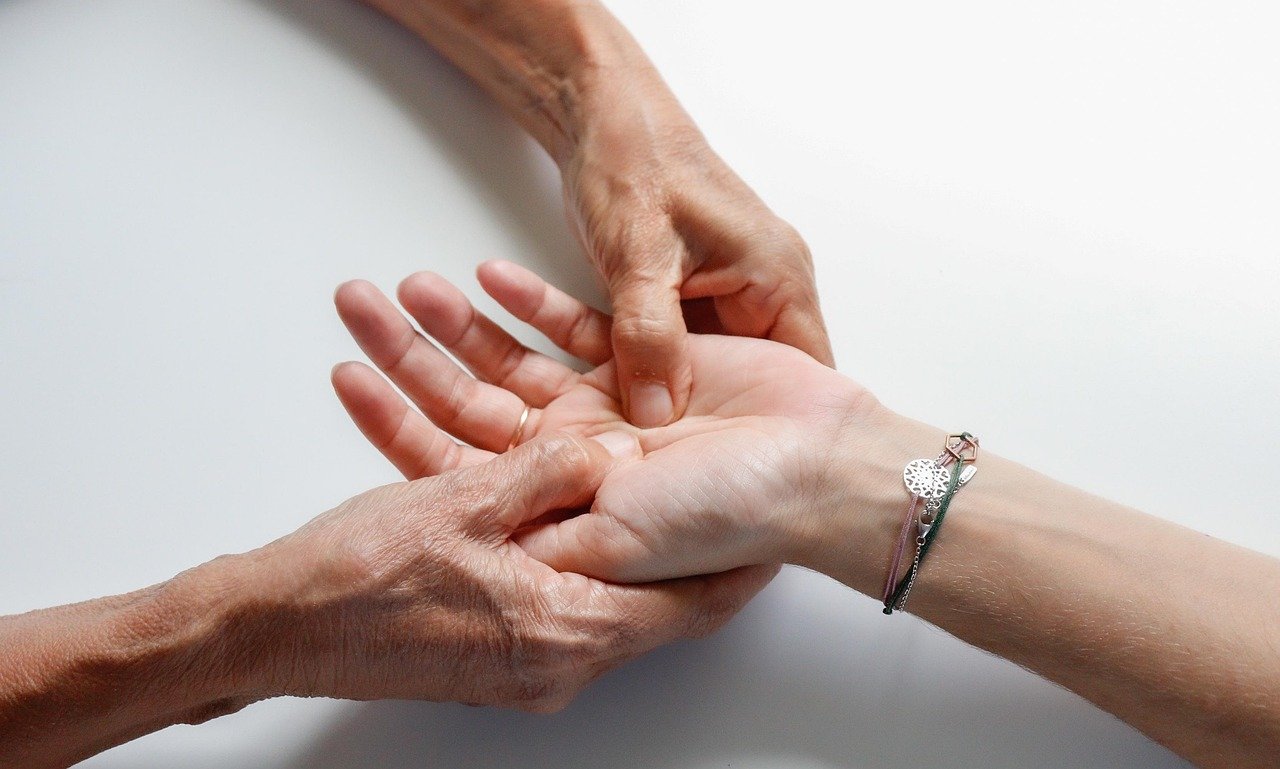
The 4-7-8 Breathing Reset This became my go-to technique after discovering its immediate effectiveness. I simply inhale for 4 counts, hold for 7, then exhale for 8. This pattern helps lower your heart rate and blood pressure, creating optimal conditions for sleep. Unlike meditation, there’s no need to focus on emptying your mind – just count and breathe.
The Military Sleep Method I learned this technique from a friend who served overseas, and it’s incredibly practical. You systematically relax each body part starting from your face, then clear your mind by visualizing one of two scenes: lying in a canoe on calm water or lying in a black velvet hammock in complete darkness. The entire process takes about 2 minutes once mastered.
The Cognitive Shuffle Technique This brilliant method involves imagining and visualizing a series of random objects that are not connected, replicating that feeling right before you fall asleep when your thoughts stop making sense. I pick a random letter and visualize unconnected objects starting with that letter – apple, aeroplane, anchor, etc. The randomness prevents my brain from engaging in problem-solving mode.
Temperature Manipulation I discovered that maintaining a room temperature between 60°F and 67°F helps keep your body temperature low and promotes better sleep. Additionally, I take a warm shower about 30 minutes before bed, which creates a temperature drop that signals sleep time to my body.
The Progressive Muscle Release Starting with my toes, I tense each muscle group for 5 seconds, then completely release. This physical approach requires no mental meditation but effectively releases physical tension that keeps me awake.
Real-World Success Stories from Sleep Communities
Through my research on various forums, I found countless people sharing similar struggles and successes. One Reddit user mentioned that lying on your bed with your feet and legs flush up against the wall helps you drift off to dreamland, which I tried with surprising success.
Another technique that gained traction involved the “reverse psychology” approach – deliberately trying to stay awake while lying comfortably in bed. The mental contradiction often triggers sleep onset within minutes.
What I found most encouraging was how many people reported success with non-meditation approaches after struggling with traditional mindfulness techniques.
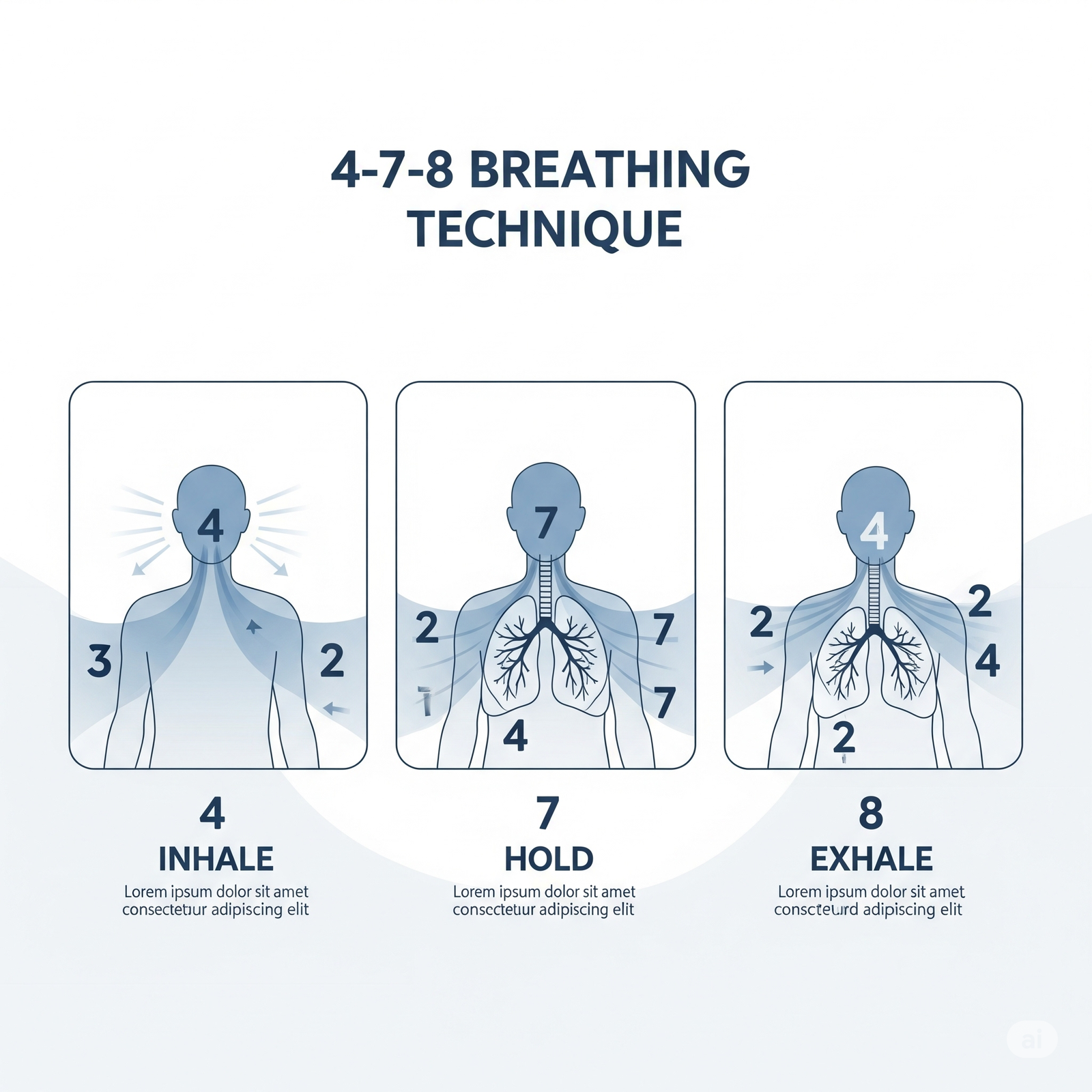
Creating Your Optimal Sleep Environment
Beyond specific techniques, I learned that environmental factors play a crucial role in achieving 5-minute sleep success. The foundation of quick sleep starts hours before bedtime with proper preparation.
Lighting Strategy I begin dimming lights 2 hours before my target bedtime. This gradual reduction helps trigger natural melatonin production without requiring supplements or meditation apps.
Sound Management While some prefer complete silence, I found that consistent background noise – whether from a fan, air purifier, or white noise machine – helps mask disruptive sounds that might interrupt the falling-asleep process.
Bedding Optimization Investing in breathable, comfortable bedding made a significant difference. I prefer natural fibres like cotton or bamboo that help regulate the temperature throughout the night.
The Psychology Behind My Non-Meditation Approach

What fascinated me about these techniques is how they work with your brain’s natural tendencies rather than against them. Traditional meditation often requires fighting thoughts or achieving mental emptiness, which can be counterproductive when you’re already tired.
These methods instead give your mind specific, simple tasks that naturally lead to sleep onset. Whether it’s counting breaths, visualizing random objects, or systematically relaxing muscles, each technique provides just enough mental engagement to prevent racing thoughts without creating stimulation.
The key insight I discovered is that falling asleep isn’t about achieving perfect mental stillness – it’s about redirecting your attention away from stress-inducing thoughts toward sleep-promoting activities.
Common Mistakes I Made (And How to Avoid Them)
Trying Too Hard Initially, I approached these techniques with the same intensity I brought to work projects. This pressure hindered sleep onset. The solution was treating these methods as gentle suggestions to my body rather than commands.
Inconsistent Application I made the mistake of switching techniques nightly, which prevented me from developing proficiency with any single method. Now I stick with 2-3 preferred techniques and rotate only when one stops working effectively.
Poor Timing Attempting these techniques while fully alert and energized rarely worked. I learned to begin my wind-down routine 30-60 minutes before using rapid sleep techniques for optimal effectiveness.
Environmental Neglect Focusing solely on techniques while ignoring room temperature, lighting, and noise levels sabotaged my efforts. The environment must support the technique for 5-minute success.
Advanced Techniques for Stubborn Sleep Resistance
When basic methods weren’t sufficient, I developed more sophisticated approaches:
The Story Fragment Method I create disconnected story snippets in my mind – a pirate finding treasure, then a baker making bread, then a cat climbing a tree. The lack of narrative connection prevents my brain from engaging analytically while providing enough mental activity to crowd out worries.
Physical Positioning Tricks Experimenting with different positions revealed that slightly elevating my legs (using a pillow) while lying on my back often triggered faster sleep onset. The improved circulation seemed to have a calming effect.
Sensory Focusing Rather than trying to ignore sounds or sensations, I learned to focus intently on one specific sense. Sometimes I concentrate on the feeling of my pajamas against my skin or the sound of my breathing. This narrow focus naturally excludes racing thoughts.
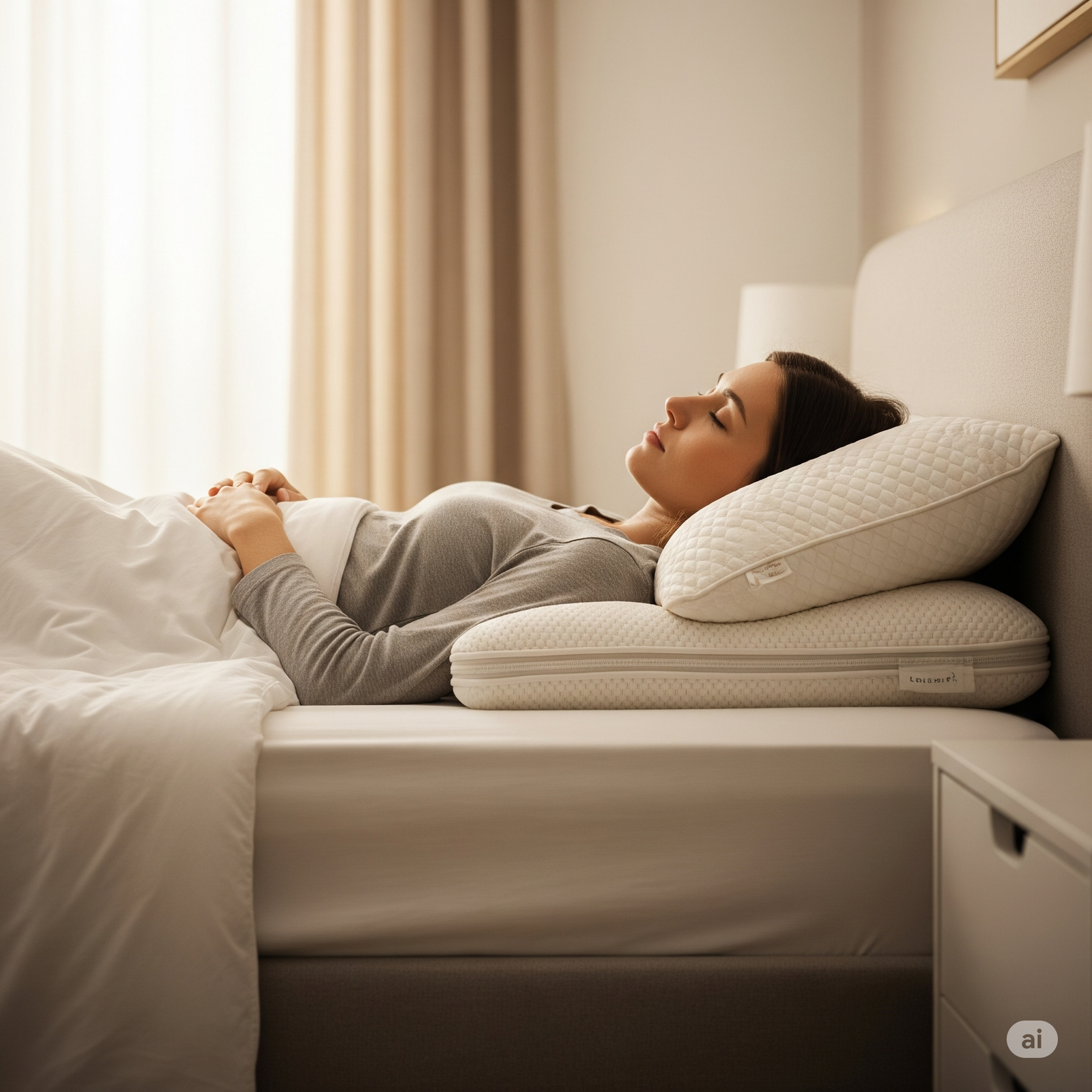
Shopping List for 5-Minute Sleep Success
Through my experimentation, I identified key products that support rapid sleep onset:
Essential Items:
- Blackout Curtains with Thermal Insulation – Complete darkness signals sleep time effectively
- White Noise Machine with Timer Function – Consistent background sound masks disruptions
- Cooling Mattress Topper – Temperature regulation prevents middle-of-night waking
- Adjustable Bed Pillow Set – Proper positioning supports circulation and comfort
Helpful Additions:
- Blue Light Blocking Glasses – Wear 2 hours before bedtime to maintain natural melatonin production
- Weighted Blanket (15-20 lbs) – Provides gentle pressure that can accelerate relaxation
- Essential Oil Diffuser – Lavender or chamomile scents support natural sleep onset
Troubleshooting When 5-Minute Sleep Fails
Even with perfect technique, some nights prove more challenging. I developed backup strategies for difficult situations:
For Racing Thoughts When my mind won’t quiet, I use the “mental filing cabinet” approach – I imagine placing each worry into a specific file folder, then closing the cabinet drawer. This acknowledges the thoughts without engaging with them.
For Physical Restlessness Progressive muscle release becomes more intensive – I tense and release each muscle group twice, holding tension for 10 seconds instead of 5. This deeper physical release often breaks through stubborn alertness.
For External Disruptions When neighbors, traffic, or other sounds interfere, I incorporate them into my visualization techniques rather than fighting them. A car passing becomes a wave on a beach; voices become distant conversations at a peaceful café.
The Role of Daytime Habits in 5-Minute Sleep
My most significant breakthrough came from recognizing how daytime activities affected nighttime sleep speed. Certain practices dramatically improved my ability to fall asleep quickly:
Morning Light Exposure Spending 10-15 minutes outside within 2 hours of waking helped regulate my circadian rhythm, making evening sleepiness more predictable and intense.
Strategic Caffeine Timing Cutting off caffeine intake 8 hours before bedtime eliminated the hidden stimulation that was sabotaging my sleep efforts.
Physical Activity Scheduling Intense exercise within 4 hours of bedtime hindered quick sleep onset. Moving workouts to the morning or early afternoon improved nighttime results significantly.
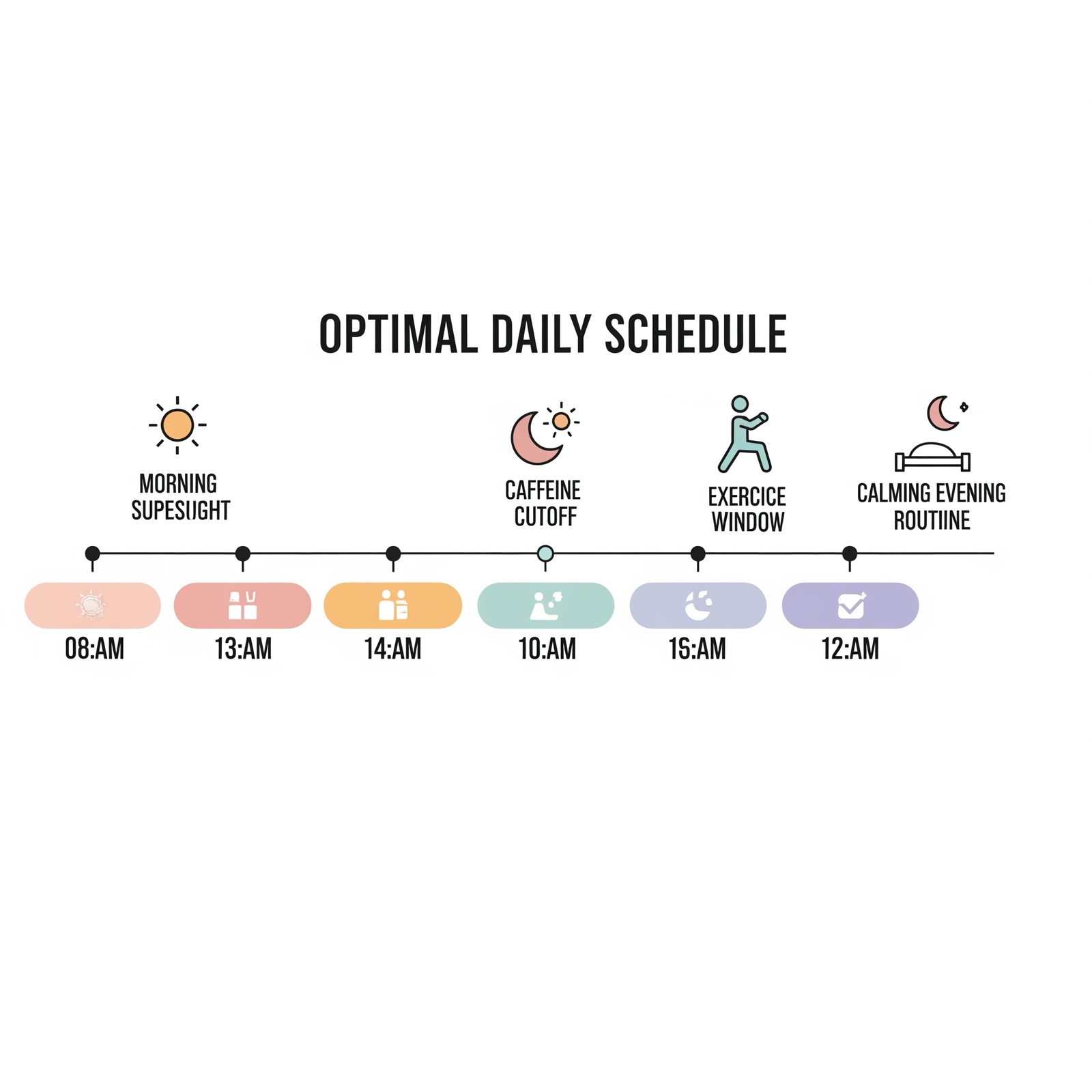
Seasonal Adjustments for Year-Round Success
I discovered that my techniques needed modification based on seasonal changes:
Winter Adaptations Shorter daylight hours required more aggressive morning light exposure, sometimes using a light therapy lamp. I also adjusted the room temperature to slightly warmer since heating systems can create overly dry air.
Summer Modifications Longer daylight and higher temperatures meant starting my wind-down routine earlier and using cooling strategies like a cold shower instead of warm baths.
Seasonal Affective Considerations During periods of seasonal mood changes, I found that the cognitive shuffle technique worked better than breathing-focused methods, possibly because it provided more mental distraction from seasonal blues.
Building Your 5-Minute Sleep System
After months of refinement, I developed a personalized system that works consistently:
My Pre-Sleep Routine (15 minutes)
- Dim all lights and set the room temperature to 65°F
- Take a warm shower or bath
- Put on comfortable, breathable sleepwear
- Do 2-3 minutes of gentle stretching
My In-Bed Protocol (5 minutes or less)
- Get comfortable using my preferred position
- Begin 4-7-8 breathing for 4 cycles
- If still awake, switch to the cognitive shuffle technique
- Use progressive muscle release as the final backup
My Emergency Backup Plan For particularly difficult nights, I have a predetermined sequence: temperature adjustment, position change, and then the military sleep method combined with story fragment visualization.
Measuring and Tracking Your Progress
To optimize my approach, I began tracking several metrics without becoming obsessive about data:
Simple Tracking Method I note the time I get into bed and estimate how long it takes to fall asleep. After a week, patterns become clear about which techniques work best on which types of days.
Environmental Variables I pay attention to room temperature, outside noise levels, and stress levels during the day to identify factors that help or hinder quick sleep onset.
Technique Effectiveness Rather than formal scoring, I simply note which method I used and whether it achieved 5-minute success. This informal tracking revealed that my success rate increased from about 20% to over 80% within two months of consistent practice.
FAQs
Can these techniques work in just 5 minutes?
Yes, but there's an important caveat - it takes practice to achieve consistent 5-minute results. When I first started, it took 10-15 minutes. With regular use, my average time decreased significantly. The key is consistent application and finding which techniques work best for your specific situation.
What if I have chronic insomnia or sleep disorders?
While these techniques have helped me tremendously, chronic sleep disorders often require professional medical attention. I recommend using these methods as complementary tools alongside proper medical care, not as replacements for professional treatment.
Do I need to do these techniques in a specific order?
Not necessarily. I've found that having 2 to 3 go-to methods works better than trying to follow a rigid sequence. Start with the technique that feels most natural, then have backups ready if the first doesn't work on a particular night.
Can these methods work if I'm highly stressed or anxious?
Stress and anxiety make quick sleep more challenging, but I've found that the cognitive shuffle and progressive muscle release techniques can be particularly effective for anxious minds. The key is giving your brain something specific to focus on rather than trying to force relaxation.
Top Reddit and Quora Questions About Quick Sleep (Without Meditation)
From r/sleep: “Does the 4-7-8 breathing work or is it just a placebo?”
Top Answer (2.1k upvotes): “I was sceptical too, but after using it consistently for 3 weeks, I can fall asleep in under 10 minutes most nights. The key is practice – it didn’t work immediately. Also, make sure you’re exhaling completely through your mouth, not your nose. Game changer for me.”
My Take: This mirrors my own experience perfectly. The technique works because it activates your parasympathetic nervous system, but it requires consistent practice to see results.
From Quora: “What’s the fastest way to fall asleep when your mind won’t stop racing?”
Most Popular Answer (847 likes): “Try the ‘boring story’ method. Pick a mundane topic like describing every detail of making a sandwich or folding laundry. Your brain gets bored and shuts down. Works better than counting sheep because it’s more engaging but not stimulating.”
My Experience: I use a similar technique called cognitive shuffle, but I prefer random objects over stories. Both work on the same principle of giving your brain something boring to focus on.
From r/LifeProTips: “LPT: If you can’t fall asleep, don’t just lie there getting frustrated”
Top Comment (4.2k upvotes): “Get up after 20 minutes and do something boring in dim light until you feel sleepy again. Reading something boring works great. Don’t use your phone or anything with blue light.”
What I’ve Found: This advice is solid, but I’ve discovered that having 3 to 4 different in-bed techniques often prevents needing to get up at all. The key is switching methods before frustration builds.
From r/AskReddit: “People who fall asleep in minutes, what’s your secret?”
Popular Answer (3.1k upvotes): “I imagine I’m a character in a boring story. Like I’m a medieval peasant going about daily chores, or I’m cataloguing items in a quiet library. Nothing exciting happens, just mundane activities in peaceful settings.”
How I Use This: This inspired my story fragment method. Creating boring, disconnected scenarios gives your mind something to do without creating stimulation.
